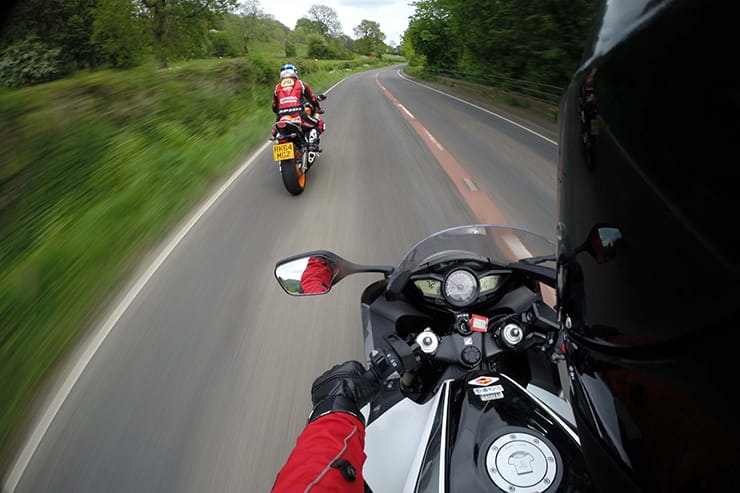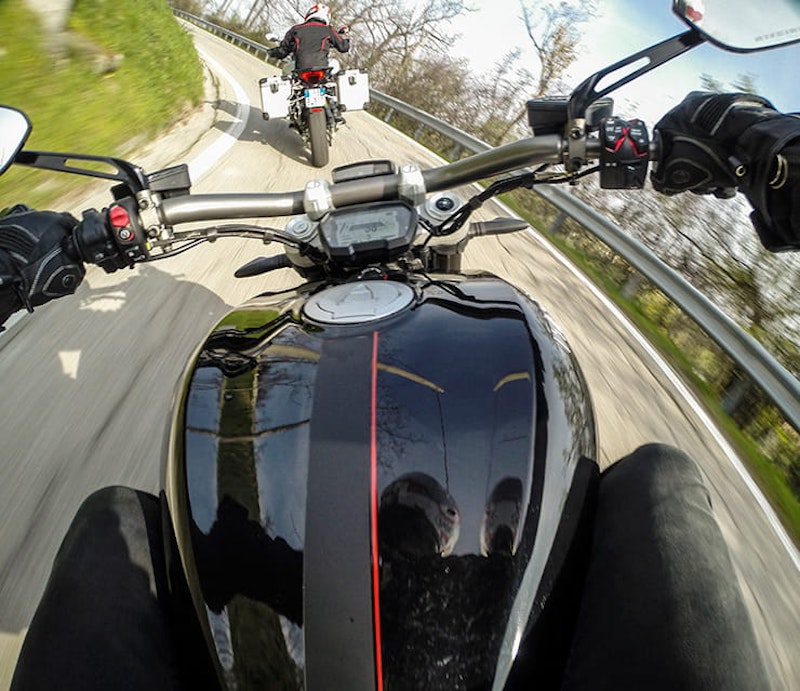Riding skills: Why can riding in groups be so dangerous?
By Gary Baldwin
Director of Rapid Training
18.06.2018
It’s the time of year to head to the coast with a group of mates - or maybe some like-minded souls from an internet forum. But beware: group riding can be perilous…
Your expert: Gary Baldwin, Director of hugely respected Rapid Training, professional crash investigator, and ex-racer. You can book a course at www.rapidtraining.co.uk or call 01296 630638
The risk following a rider this closely is that you watch them, not the vanishing point of the corner, which means if they make a mistake, you’re going with them…
Is group riding a factor in a lot of crashes?
When I arrive at a bike crash scene, about half of the time there are other motorcyclists waiting. Group riding is involved in a significant number of crashes. But there’s nothing inherently dangerous about it providing everyone knows what they’re doing.
So how do I avoid the problems?
Tip number one is don’t ride with loads of people you don’t know. I’ve gone to lots of crashes and when I’ve asked other riders what’s gone on, they tell me they hadn’t met the crash victim before today. People often meet other riders off the internet from a forum, but just because they’ve got the same bike doesn’t mean they have any idea how each other will ride. So they all shoot off and hope they have a good time because they’ve got the same bike. It generally doesn’t work very well.
Why do these kind of groups cause crashes?
The main problem is they don’t set down any ground rules, which results in people desperately trying to keep up even though they’re out of their depth.
OK, so how do I avoid chasing the leaders?
Take responsibility for knowing where you’re going. Lots of riders don’t do this so there’s a pressure to keep up so you don’t get lost. Simply knowing where you’re going can take the pressure off.
Looks sensible enough. Beware being the last rider – you’ll generally have to ride the fastest to keep up if any overtakes are involved
Any other rules for groups?
No overtaking within the group. You’ve got enough to think about without wondering if another bike is going to come past you. The order you set off in should be the order you arrive, and if you want to change the order, you do it when you’ve stopped for a break. I’ve seen crashes between two bikes where one has gone to overtake a slower rider just as that rider has moved out to overtake a car. Those types of crashes tend to be pretty messy.
Where should the most experienced riders go in the group?
With most groups it’s generally the person at the back who has to travel fastest because they’ll inevitably miss an overtake and then have to catch up. It’s these people who are most likely to crash, not Mr Speedy out in front so it’s not a good idea to put the least experienced rider at the back.
Any other dangers I should be aware of?
It’s worth bearing in mind that even if you’re not involved in a crash, it can still end badly for you. If there’s a crash involving a big group, there are likely to be a lot of witnesses in cars very keen to give a statement saying all the bikes were going fast. People always remember a group of 10 bikes going past them. And then you’re all in deep shit because the whole group will be charged with dangerous driving. And you really don’t want to get involved in that.
If the lead rider is faster than you (that’s ex-BSB racer Jenny Tinmouth out front), let them go. No point making a numpty of yourself!
So really you should ride slower in a group than faster?
There’s a lot of sense in doing that. If you’re riding in a group you need to adjust your expectations. If you want to go for a thrash, go on your own, or with one mate. If you want to go in a big group to the coast, you’ll have to make compromises and go at a gentler pace. If you try and go at the same speed as you would on your own, it could easily end in tears.
Any other tips?
Always keep the bike behind you in your mirrors. And if you can’t see them, you don’t turn off until they're in sight - you just wait at the junction until they appear. That way none of the group gets lost and people don’t feel pressured to ride too fast. We use this on our courses and we’ve never lost anyone. It’s very easy.

